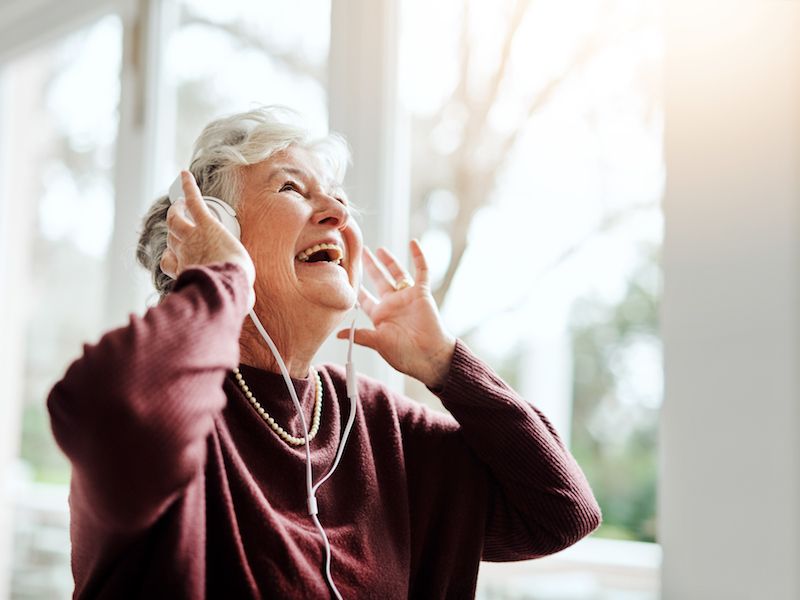
People who work in loud environments such as construction sites or at heavy metal concerts are not the only ones impacted by noise related hearing loss. Leisure associated noise exposure can be just as damaging as work related noise exposure. What kind of exposure are we dealing with? Loud noise heard through headphones, whether it be gaming, streaming video, music, or even an audiobook with the volume turned up.
You might be surprised to discover that a mobile device can go that loud. The average pain threshold for human hearing is roughly 150 db which is well within the range of these devices. This is the volume where noise begins to literally cause pain in your ears. So what’s the plan to protect against this type of noise-related loss of hearing?
The volume level here is essential. A simple shorthand that’s widely suggested is the 60/60 rule: Listen with the volume at or below 60% for 60 minutes or less at a stretch (because how long you listen for matters, too).
Make a Setting on Your Hearing Aids For Listening to Music
Be certain, if you’re wearing hearing aids, you don’t attempt to drown out other noises by turning your streaming music up too loud. And there are much healthier ways to listen to music so ask us about that also. Hearing aids aren’t created to increase the quality of music like they do with voices so if you’re really into music, you might have observed this. We might be able to make adjustments to minimize feedback and noise while increasing some frequency ranges to enhance the quality of sound when listening to music.
What Are The Right Headphones For You?
When getting headphones there are lots of choices, especially if you have hearing aids. It may be a matter of personal preference, but there are some things you should think about there as well.
Headphones That go Over The Ears
While the foam-covered speakers that was included with your old Walkman are largely a thing of the past, over-the-ear headphones have had a resurgence. Often shockingly expensive, they provide a large variety of color options and celebrity endorsements, and yes, superior sound quality. And unlike those little foam pads, these go over the whole ear, blocking outside sounds.
Main-stream perception is that these are less dangerous than in-ear headphones because the source of the sound is further away from your eardrum. But the fact is they’re frequently capable of much louder sound than the smaller kind, the speakers are a lot bigger. Additionally, noise-canceling will probably help you ignore the crying baby on your flight, but in other circumstances, it can block sounds you need to hear (such as a car honking). But on the upside, you don’t have to compete with outside sound so you can enjoy your music at lower volumes.
Earbuds
The normal earbuds are widely known for inferior quality of sound, but because they come along with your phone many people still use them. Especially, with newer Apple devices, it’s just easier to use the earbuds which were provided with the device because it most likely doesn’t have a headphone jack.
Earbuds also don’t cancel out noise so the drawback is, you have a tendency to turn up the sound level. It’s commonly believed that sticking earbuds so close to your eardrum is the main concern but it’s actually the volume.
Noise Canceling Earbuds
Many people buy earbuds with a rounded, rubbery tip both because they’re more comfortable than traditional earbuds and better at blocking outside sounds. A seal that blocks outside sound from entering is formed by the rubber tip which molds to the shape of the ear. Not to sound like a broken record, but these have the same disadvantages as the other two (volume is the main problem), as well as carrying the same caution as over-the-ear headphones (they can block out warning sounds). Needless to say, these won’t work for you if you have hearing aids.
A number of pairs may need to be tested before you find headphones that are appropriate for you. Your expectations, acoustically, will be different dependant on what kind of use you normally give them. The relevant thing is to seek out headphones that make it comfortable for you to enjoy at a safe volume.
How to be Certain Your Hearing is Protected
Is it Safe, How Can I be certain? If you use a smartphone, you can get an app for that, you can get the National Institute for Occupational Safety and Health’s free Sound Level Meter app. There are different apps out there, but research has found that the reliability of these other apps is spotty (also, for whatever reason, Android-based apps have been shown to be less reliable). That motivated NIOSH to create an app of their own. You can measure outside sounds with the app, but sounds coming out of your device’s speakers can be measured too, so you will learn exactly how much volume your ears are getting. You have to put in a little effort, but putting in place these types of protective measures can help safeguard your ears.